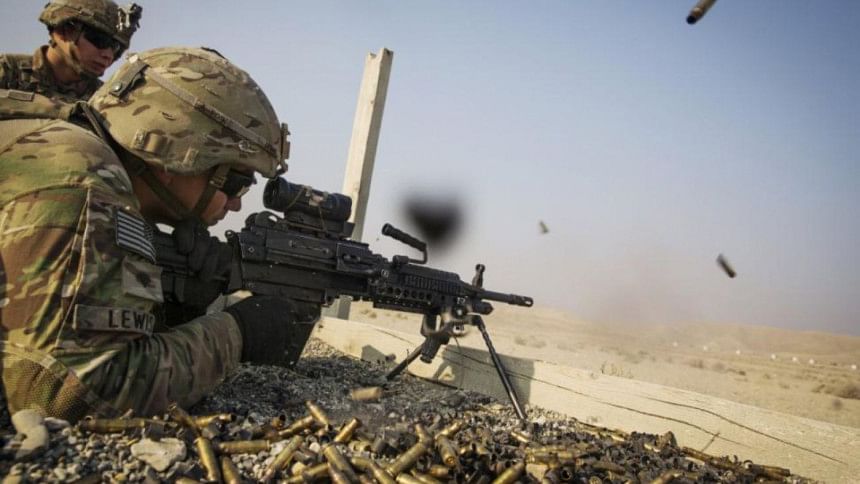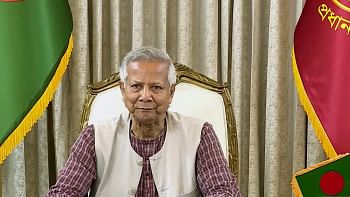US counterterrorism strategy in South Asia

As the United States observes the fourteenth anniversary of 9/11 terrorist attacks, it is important to have a fresh look at U.S. counterterrorism strategy in South Asia. Such discussions should focus on U.S. threat perception and the evolving responses to deal with the threat.
Until the rise of Islamic State of Iraq and the Levant (ISIL) as a self-sustaining force in 2014, al Qaeda's core and affiliates have long constituted the principal threats to the U.S. and its interests. There are sharp differences between the core and the affiliates. While al Qaeda core is located in Pakistan, the affiliates are nothing but a wide variety of groups, cells, and individuals either directly or loosely connected to the core. Al Qaeda core is defined by the organisation's senior leadership, including Osama bin Laden and Ayman al Zawahiri, who have long stayed in Pakistan and maintained a strong relationship with the Afghan-focused Taliban insurgent groups.
Between 2001 and 2007, al Qaeda was initially on the run but later began to regroup and re-organise – thanks to the distraction and negligence caused by the U.S. invasion of Iraq in 2003. During this period, al Qaeda changed its attack styles from the use of expeditionary strikes, such as the 1998 US embassy bombings in East Africa and the 9/11 attacks in New York, to the guerilla style strikes in Madrid (2004) and London (2005). While expeditionary terrorist strikes required the deployment of trained recruits to overseas target countries, the guerilla strike strategy has involved radicalised immigrant communities and local recruits. Since 2007, al Qaeda core has continued to lose its strength in Pakistan with a corresponding increase in the strength and activities of its affiliates in the Middle East and North Africa. It is in this context, the Boko Haram in Nigeria, Al Shabaab in Somalia, and Al Nusrah Front in Syria have come into more prominence in recent years. The latter group has eventually morphed into a more sinister threat of ISIL which now draws a huge pool of young recruits not only from the impoverished regions of Africa and Asia but also from the wealthy countries of Europe and North America.
After al Qaeda, two versions of Taliban have continued to pose serious threats to U.S. and its allies. The first represents three major Afghan Taliban groups including Mollah Omar's Quetta Shura Taliban, the Haqqani Network of Sirajuddin Haqqani, and Gulbuddin Hekmatiyar's Hezbe Islami. It is now abundantly clear, these Taliban militias have wanted the expulsion of U.S. and NATO forces from Afghanistan, and power sharing in Afghanistan's domestic politics. They are believed to have a sanctuary in Pakistan's frontier areas in FATA and Balochistan Province, and a support structure inside Pakistan's military and intelligence apparatus. Pakistan's support for these Afghan groups is premised on the ground that it would provide a strategic depth in the event of a nuclear standoff with India.
The second Taliban version, also known as 'Pakistani Taliban,' is a loose network of violent extremist groups, who are opposed to Pakistan's support for the US led war on terrorism, and Islamabad's counterinsurgency operations in the FATA. The Tehreek-e-Taliban Pakistan (TTP), established by Baitullah Mehsud, is the core of this Pakistani Taliban group. It came into prominence after the Red Mosque siege in July 2007, in which Pakistan's commando operations inside the mosque killed more than 100 including hard core militants, state security personnel, and innocent civilians.
The United States claims to adopt a comprehensive counterterrorism approach in which various elements of national power including diplomacy, law enforcement cooperation, intelligence sharing, financial control, and military force have been used. In reality, the last component, that is the use of military forces, is arguably the most visible to the American public, and thus received more priority in the national security strategies of Bush Jr. and Barack Obama administrations.
The use of military force came in several forms. In Afghanistan, the United States initially wanted to avoid the 'Soviet mistake' by maintaining a light footprint. The goal of the Afghanistan War at this period, from 2002 to 2005, was fighting terrorism. As the war goals were expanded to include the ambitious tasks of nation-building, between 2006 and 2010, the U.S. force deployment in Afghanistan peaked to 90,000 troops in 2010. This U.S. troops surge was matched by the gradual deployment of another 40,000 troops from European and NATO allies, many of whom were unwilling to do more burden-sharing. A reluctant Pakistan was dragged into these war efforts. Despite such military contributions, Pakistan's flirting with Islamist militants has created a trust deficit in Islamabad-Washington relations. It is in this context, on May 1, 2011, the U.S. Navy Seal conducted a commando operation which killed Osama bin Laden. The murder of Laden in a covert U.S. operation not only exposed the trust deficits between Islamabad and Washington, but also raised questions about the complicity of Pakistan's state apparatus or any rogue elements in it in providing a support structure for al Qaeda.
The Laden killing mission, planned by the Central Intelligence Agency and executed by Navy Seal, also reveals the growing role of intelligence and special operations in the global war on terrorism. Between 2001 and 2014, numerous cross-border covert operations in Pakistan were carried out by the U.S. and NATO forces. These strikes are targeted to extremely hostile and inaccessible areas of FATA, which are used by al Qaeda and Taliban militias as a staging ground for launching attacks on U.S. and NATO soldiers in Afghanistan. The use of pilotless drones also reduces the probability of harming U.S. soldiers, who would otherwise be engaged in armed hostilities in Pakistan and thus risking their lives.
The U.S. led coalition military strategy in Afghanistan and the adjacent border areas of Pakistan has drawn huge criticisms for its over-reliance on the use of coercive force and utter negligence of peace, reconciliation, and reconstruction efforts. The coalition strategy has also been criticised for creating an inefficient Afghan security force, which lacks sufficient training and morale to withstand Taliban insurgents, and shoulder the responsibility for securing Afghanistan after the U.S. and NATO forces' withdrawal in 2014. These generic problems in the Afghan National Army were exposed in August 2014 when U.S. Major General Harold Greene, the deputy commander of the Combined Security Transition Command, was killed by an Afghan soldier at a training facility in Kabul. The murder of Greene and other high profile terrorist attacks in 2014 have emboldened the U.S. position that a small contingent of U.S. and NATO troops would stay in Afghanistan at least for a decade.
The writer is Associate Professor of International Relations at the University of Dhaka, and a member of the International Institute for Strategic Studies (IISS), London. Email: [email protected].

 For all latest news, follow The Daily Star's Google News channel.
For all latest news, follow The Daily Star's Google News channel. 



Comments